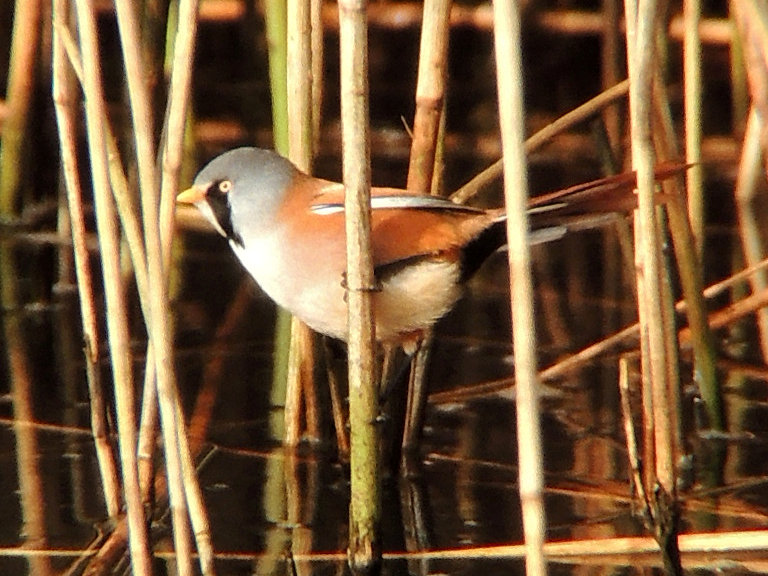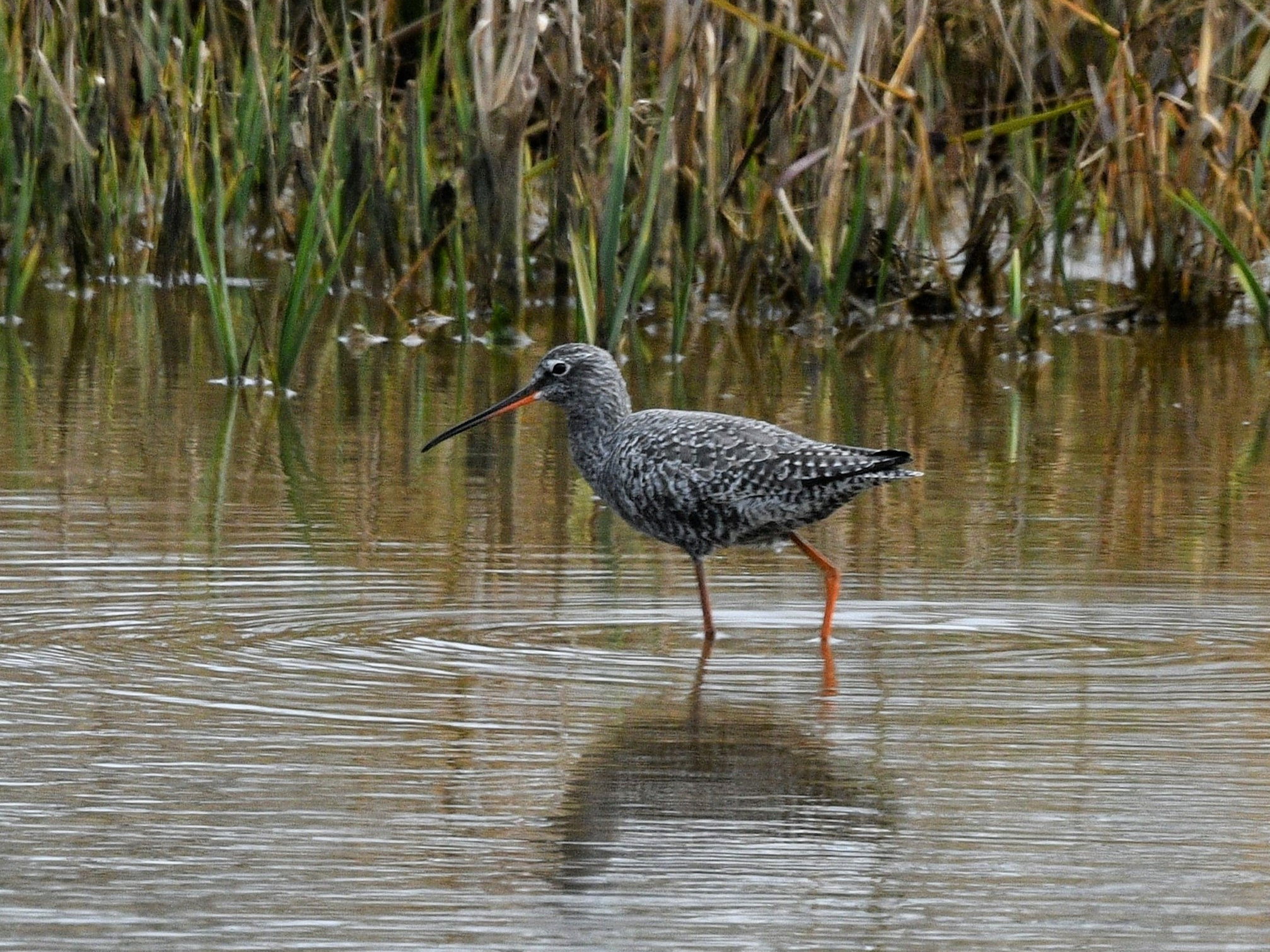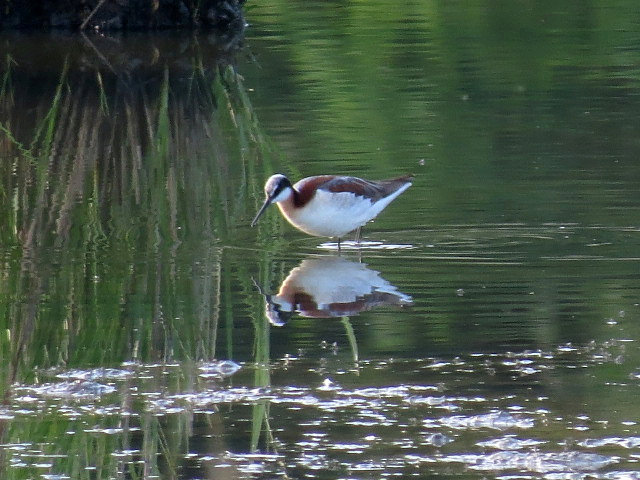Western Yar
The Western Yar rises near Freshwater Bay and flows north to Yarmouth, where it forms an estuary and is flanked by wetland pools and marsh. The wetlands at the Yarmouth end of the river are important for Waterfowl and Waders, especially in Winter, and can be viewed relatively easily from the section of old railway between Yarmouth and the Thorley Road (footpaths F61 and Y19). There are three main wetland areas: the Estuary, Station Ponds and Mill Copse Scrape, plus Rofford Marsh. Mill Copse also provides a circular walk for woodland birds and views over adjacent farmland and Mill Copse Scrape, while the hedges alongside the old railway line are good for redwings and fieldfares in winter and migrating warblers in Spring and Autumn. The estuary may also be viewed from the Yarmouth road bridge on the A3054 and footpath leading from the bridge, beside the Yarmouth Sailing Club building and along the eastern edge of the estuary to the main Yarmouth car park, where it joins footpath Y1 to the old mill and then the old railway line. The south end of the estuary can be viewed from Freshwater Causeway where footpaths continue south to nice areas of freshwater marshland and riverine woodland towards Afton and Freshwater.
Please note: the view of the Station Ponds is currently restricted due to extensive reed growth.
Access, parking and amenities
-
Station Road – Turn off the A3054 Yarmouth Road into Victoria Road. This joins Station Road, which leads to the old railway station (now ‘Off the Rails’ restaurant) and the cycle path between Freshwater and the Thorley Road. Parking spaces available alongside the road at c. SZ357893. Some spaces allow parking for 2 hours, Monday to Saturday (free on Sunday), but check that you are parked within the marked bay lines and also that you aren’t parking in a resident’s parking place otherwise you could receive a hefty fine.
- River Road car park – pay and display in the main public car park at SZ354894.
- Thorley Road – some parking alongside the road near the entrance to the old railway line at SZ364895.
- Freshwater Causeway - very limited roadside parking.
- Afton Road - parking at Afton Garden Centre and the End of the Line Cafe.
With regards to local amenities, there are a number of public toilets and cafes in Yarmouth, and the End of the Line Cafe at Afton.
What to look out for - Calendar
Spring (March - June)
Within the Estuary, large numbers of Mediterranean gulls can gather in early Spring along with sandwich tern. Little gull, little tern and common tern are also possibilities. Teal and shoveler remain until early Spring.
The Station Ponds and Mill Copse Scrape host Waders on passage such as common and green sandpipers. If water levels are suitable, garganey, little ringed plover and yellow wagtail are also possibilities. Hirundines gather in good numbers especially during rain. The fence line and grassy area around Rofford Marsh can be good for migrant passerines, such as redstart and ring Ouzel.
During late Spring / Summer months, Cetti’s, sedge and reed warblers breed in the reed bed, a non-breeding flock of black-tailed godwits frequent the area and the occasional hobby passes through.
Autumn (July - mid November)
The Autumn passage period sees similar species to those present during Spring migration. As conditions tend to be drier than in Spring, Mill Copse Scrape is generally better for waders than Rofford Marsh at this season.
The returning Summer visiting migrants tend to pass through mainly during August - September, with the following weeks seeing movements of pipits and finches. Stonechat can be numerous along the estuary margins and black redstart is sometimes present in the vicinity of the Mill.
Winter (mid November - February)
In Winter, the Estuary becomes a magnet for dark-bellied brent goose, wigeon, teal, shoveler, ringed, golden (which frequent the fields on the eastern side of the estuary) and grey plovers, plus curlew, redshank and spotted redshank (recently less frequent). Lapwing, dunlin, kingfisher (especially near the old mill), rock pipit and grey wagtail can also be seen. At times, gadwall, goldeneye, red-breasted merganser, spoonbill, marsh and hen harriers and red knot can also be present.
Snipe can be found feeding on the mud islands on the eastern half of Rofford Marsh. Bittern and bearded tit are possible (not annual, but most recent IoW sightings have been made in the reed bed along the public footpath Y2 opposite ‘Off the Rails’).
A linnet flock often frequents the area between the old railway line and Mill Copse in the Winter months.
Year round
Year round species comprise mute swan, shelduck, mallard, cormorant, little egret, grey heron, little grebe, moorhen, coot, oystercatcher, redshank and greenshank. Black-headed and herring gull are the most frequently recorded gull species, while great black-backed, lesser black-backed and common gull, if present, are usually in ones or twos. Rock and meadow pipit and pied wagtail frequent that water’s edge whilst Cetti’s warbler and reed bunting are present in reeds alongside the old railway track. Kestrel, sparrowhawk and peregrine falcon are also frequent visitors.
Occasionally, a barn owl can be seen hunting over the reed beds behind Mill Copse Scrape at dusk.
Mill Copse hosts stock dove, great spotted woodpecker, goldcrest, coal tit and treecreeper. Jay can often be located too.
Rarities
The site can be good for rarities such as the black tern (local rarity). Black-winged stilt, and a pied wheatear turned up not too far from this location. Dusky and yellow-browed warbler have occurred at Afton Marsh, and the Station Ponds once famously held a Summer plumage Wilson’s phalarope.
Images

Bearded tit. © Andy Butler

Spotted redshank. © Andy Butler

Wilson's phalarope. © Andy Butler
Useful links and further reading
View the current weather forecast for Yarmouth
View a map view of Western Yar
